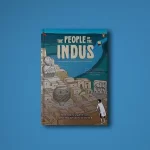As this reviewer feared, a section of the ‘right-wing’ has begun to protest against the ‘bedroom’ scene in the movie Oppenheimer.
In this scene, a Marxist psychiatrist (a contradiction in terms actually) with a Jungian perspective, attempts to impress upon Oppenheimer, the power of an atom bomb.
To do so, she asks him to read a passage from the Gita, describing the terrible, destructive aspect of the cosmic manifestation of Vishnu. The translation is wrong.
While the verse could be used by science teachers to help students understand entropy poetically, Oppenheimer and his Communist psychiatrist girlfriend interpret it more apocalyptically.
The intention behind the scene is clear: the psychiatrist aims to convey a vision of destruction to her physicist lover in an intimate moment.
Here Oppenheimer could not be put in the same class as Niels Bohr, Heisenberg or John Wheeler. They evidently had a deeper and better philosophical grasp of ‘Eastern’ traditions and their relevance to questions about nature of reality that new physics had then dramatically unveiled.
Getting worked up about this portrayal is thus juvenile.
However, there’s another depiction in the movie that should genuinely concern us.
The black hole
Oppenheimer, along with another American physicist, Hartland Snyder, had published a paper in Physical Review dated 1 September, 1939, titled ‘On Continued Gravitational Contraction‘ .
Applying Einstein’s General Theory of Relativity, Oppenheimer and Snyder predicted:
When all thermonuclear sources of energy are exhausted a sufficiently heavy star will collapse. Unless fission due to rotation, the radiation of mass, or the blowing off of mass by radiation, reduce the star’s mass to the order of that of the sun, this contraction will continue indefinitely.
The movie shows Oppenheimer explain the concept of a black hole to his friends. Almost everyone is baffled. It is made to look like he was predicting something entirely anew. (Nolan’s homework here must be appreciated).
But wait.
It was actually an Indian scientist who had predicted blackholes at least five years before this paper. He was however ignored by the scientific orthodoxy of the West.
He was Subrahmanyan Chandrasekhar (1910-1995).
In 1930, a 20-year-old Chandrasekhar, who had spent only a year in his graduate studies at Trinity College, Cambridge, challenged the prevailing wisdom on dying stars.
His astrophysics mentor at Trinity was Sir Arthur Eddington. By 1933, Chandrasekhar had finished his doctoral thesis, and Eddington ensured that his student’s thesis was presented at the Royal Astronomical Society in London in 1935.
What was the thesis about?
Till then, it was considered that once a star’s fusion fuel was over, they would become what are called “white dwarfs”. Further, its collapse would be stopped by what is called the exclusion principle – the repulsion between electrons.
But Chandrasekhar said stars with a mass of at least 1.44 times that of the Sun would not just stop at that. Here, gravity would be able to conquer the repulsion and the stars would continue to collapse.
Into what? Black holes!
On 11 January, 1935, that is five years before Oppenheimer-Snyder paper, Chandrasekhar presented his thesis.
However, what was to be a moment of triumph for the young Indian turned into a day of horror as Eddington launched a savage attack on the work.
Despite the weakness of the arguments of Eddington, the establishment scientists sided with him.
Physicist and historian of science, Arthur Miller describes it thus in his book Empire of the Stars: Friendship, Obsession and Betrayal in the Quest for Black Holes:
Was it professional jealousy – were they trying to safeguard their own positions in the scientific cosmos? Or was there some other, more sinister factor, to do with Chandra’s colour and racial origin? Such a thought would be taboo today, but in those days the Raj still ruled India, and Englishmen still basked in the belief in their innate superiority. Could it be that these stalwarts of Empire found it unacceptable to be overtaken by a young man from one of the colonies and refused to accept that he might have anything to teach them?
…. Chandra never forgot that moment of humiliation when he had confronted the devilish titan of astrophysics. He was convinced he was right. Yet what he could not understand was why Eddington should have attacked and humiliated him in such a vicious and unbridled manner. It was indeed extraordinary that a nineteen-year-old Indian youth had managed to make a discovery that had eluded the great minds of European astrophysics.
To understand how that came about, we have to step back in time to India not long after the end of the Victorian age, when the Raj was beginning to show signs of weakness and young Indians dared to step forward and claim their heritage.
(p.4)
One would have expected that Nolan point out the Indian connection here. On the contrary, his movie has unfortunately created the wrong impression that it was Oppenheimer who first predicted blackholes.
But then, Arthur Miller’s Empire of the Stars was published the same year as American Prometheus—2005. The latter being the work on which Nolan based his movie.
So what can we actually complain about?
Also read:






